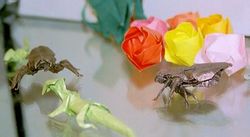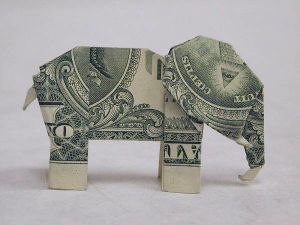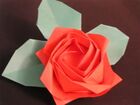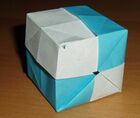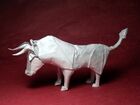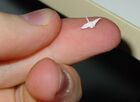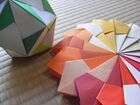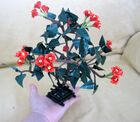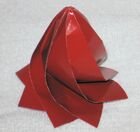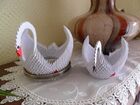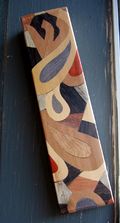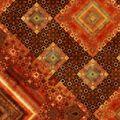طي الورق
طي الورق أو أوريغامي (باليابانية: 折り紙 = طي + ورق) هو فن طي الورق، اللفظ مشتق من اليابانية، أوري "طي"، غامي "ورق". يستعمل هذا الفن تقنيات محدودة لطي الأوراق، إلا أن تركيب هذه التقنيات مع بعضها البعض يمكن أن يعطي في النهاية طرائق متعددة لإنجاز أشكال معقدة للغاية. وهو فن تشكيل الورق على هيئة أشكال زخرفية جميلة وهو فن ياباني ، وهي تسلية يابانية تقليدية ، حيث تؤخذ ورقة مربع الشكل و تطوى في اتجاهات مختلفة حتى تصنع أشكال جميلة مثل الحيوانات والطيور والنباتات الجميلة.
تاريخ طي الورق
وهذا الفن بدأ في 700 م عندما قدم الورق إلى اليابان فكان يصنع منه ديكورات المراسم الدينية ، وفي عهد هييان (794-1185) إنتشر إستخدام الورق في الرسائل والهدايا بشكل جميل. أصبح هذا الفن منتشرا في كل أنحاء اليابان. و في عهد مييجي (1868-1912) أصبح هذا الفن يعلم في المدارس. واستمر تعليم هذا الفن فن طي الورق أو كما يسمى في اليابان أوريجامي في المدارس حتى الآن.
كيفية التنفيذ
تبدأ عملية الطي بأخذ ورقة مربعة الشكل، والتي تكون صفحيتها من لونين مختلفين، من القواعد الأساسية في هذا الفن أنه يجب عدم قص الورقة. عكس ما كان يعتقد، فإن طي الورق الياباني التقليدي، و الذي تم تداوله منذ فترة إيدو (1603-1867 م)، لم يكن يعرف هذه القواعد، كان العملية تبدأ أحيانا بورقة مستطيلة الشكل، كما كان يتم قص الأوراق عند الحاجة.
معرض
These pictures show examples of various types of origami.
Dollar bill elephant, an example of moneygami
Kawasaki rose using the twist fold devised by Toshikazu Kawasaki. The calyx is made separately.
A wet-folded bull
A challenging miniature version of a paper crane
Two examples of modular origami
An example of origami bonsai
Flamenco dancers made using a wet fold and twisting/tying technique
Chinese Golden Venture swans
في الثقافة الشعبية
- In House of Cards season 1, episode 6, Claire Underwood gives a homeless man cash, and he later returns it folded into the shape of a bird.[1] Claire then begins making origami animals, and in episode 7 she gives several to Peter Russo for his children.[2]
- In Blade Runner, Gaff folds origami throughout the movie, and an origami unicorn he folds forms a major plot point.[3]
- The philosophy and plot of the science fiction story "Ghostweight" by Yoon Ha Lee revolve around origami. In it, origami serves as a metaphor for history: "It is not true that the dead cannot be folded. Square becomes kite becomes swan; history becomes rumor becomes song. Even the act of remembrance creases the truth".[4] A major element of the plot is the weaponry called jerengjen of space mercenaries, which unfold from flat shapes: "In the streets, jerengjen unfolded prettily, expanding into artillery with dragon-shaped shadows and sleek four-legged assault robots with wolf-shaped shadows. In the skies, jerengjen unfolded into bombers with kestrel-shaped shadows." The story says that the word means the art of paper folding in the mercenaries' main language. In an interview, when asked about the subject, the author tells that he became fascinated with dimensions since reading the novel Flatland.[5]
- The 2010 video game Heavy Rain has an antagonist known as the origami killer.
- In the BBC television program QI, it is reported that origami in the form it is commonly known, where paper is folded without being cut or glued likely originated in Germany and was imported to Japan as late as 1860 when Japan opened its borders (However, it is confirmed that paper cranes using this technique have existed in Japan since the Edo period before 1860).[6]
- Paper Mario: The Origami King is a 2020 Nintendo Switch game featuring Mario series characters in an origami-themed world.
انظر أيضاً
المراجع
- ^ "House of Cards: Chapter 6". AV Club.
- ^ "House of Cards: Chapter 7". AV Club.
- ^ Greenwald, Ted. "Q&A: Ridley Scott Has Finally Created the Blade Runner He Always Imagined". Wired. Retrieved 14 March 2015.
- ^ Molly Brown, "King Arthur and the Knights of the Postmodern Fable"; in: The Middle Ages in Popular Culture: Medievalism and Genre – Student Edition, 2015, p. 163
- ^ "Interview: Yoon Ha Lee, Author of Conservation of Shadows, on Writing and Her Attraction to Space Opera". SF Signal. 30 May 2013. Retrieved 27 March 2017.
- ^ Guide, British Comedy. "QI Series O, Episode 10 - Origins And Openings". British Comedy Guide. Retrieved 13 January 2019.
The art of folding paper into shapes without cutting it comes from Germany. Origami uses white paper, which can be folded and cut. German kindergartens use paper that is uncut and is coloured on one side, and this came into Japan when the country opened its borders in 1860. Thus what we generally consider origami today in fact has German roots.
للاستزادة
- Kunihiko Kasahara (1988). Origami Omnibus: Paper Folding for Everybody. Tokyo: Japan Publications, Inc. ISBN 4-8170-9001-4
- A book for a more advanced origamian; this book presents many more complicated ideas and theories, as well as related topics in geometry and culture, along with model diagrams.
- Kunihiko Kasahara and Toshie Takahama (1987). Origami for the Connoisseur. Tokyo: Japan Publications, Inc. ISBN 0-87040-670-1
- Satoshi Kamiya (2005). Works by Satoshi Kamiya, 1995–2003. Tokyo: Origami House
- An extremely complex book for the elite origamian, most models take 100+ steps to complete. Includes his famous Divine Dragon Bahamut and Ancient Dragons. Instructions are in Japanese and English.
- Kunihiko Kasahara (2001). Extreme Origami. ISBN 0-8069-8853-3
- Michael LaFosse. Origamido : Masterworks of Paper Folding ISBN 978-1564966391
- Nick Robinson (2004). Encyclopedia of Origami. Quarto. ISBN 1-84448-025-9. A book full of stimulating designs.
وصلات خارجية
- GiladOrigami.com, contains many book reviews
- WikiHow on how to make origami
- Origami USA, many resources, especially for folders in the USA
- British Origami Society, many resources, especially for folders in the UK
- Between the Folds, documentary film about origami and origami artists
- Lang, Robert (February 2008). "The math and magic of origami" (video). TED ED. Retrieved April 6, 2013.
- Robert Lang (16 Mar 2019). "See a NASA Physicist's Incredible Origami" (video). Southwest Daily News (in الإنجليزية).
- Engineering with Origami, YouTube video by Veritasium about uses of origami for structural engineering
